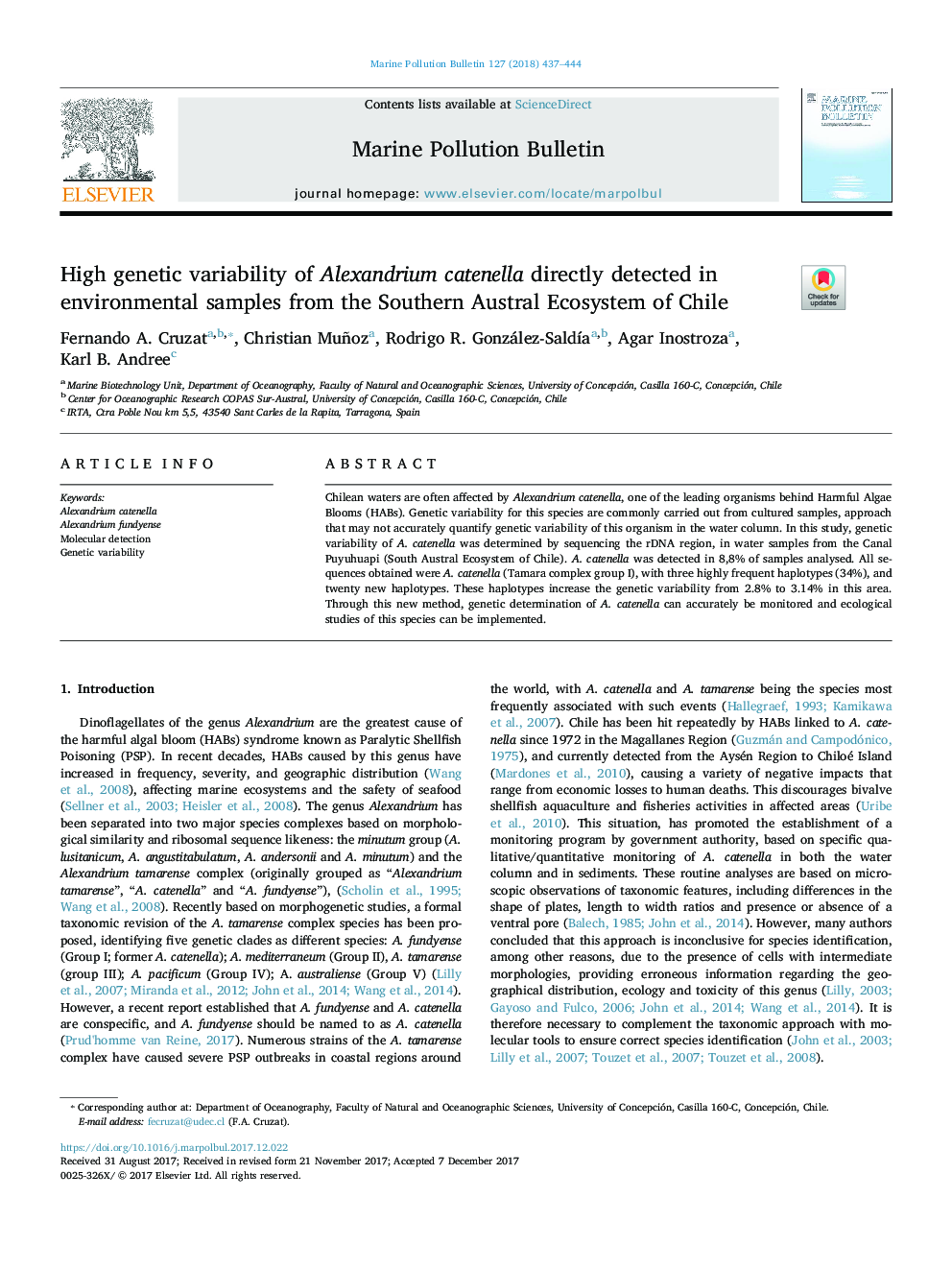| Article ID | Journal | Published Year | Pages | File Type |
|---|---|---|---|---|
| 8871687 | Marine Pollution Bulletin | 2018 | 8 Pages |
Abstract
Chilean waters are often affected by Alexandrium catenella, one of the leading organisms behind Harmful Algae Blooms (HABs). Genetic variability for this species are commonly carried out from cultured samples, approach that may not accurately quantify genetic variability of this organism in the water column. In this study, genetic variability of A. catenella was determined by sequencing the rDNA region, in water samples from the Canal Puyuhuapi (South Austral Ecosystem of Chile). A. catenella was detected in 8,8% of samples analysed. All sequences obtained were A. catenella (Tamara complex group I), with three highly frequent haplotypes (34%), and twenty new haplotypes. These haplotypes increase the genetic variability from 2.8% to 3.14% in this area. Through this new method, genetic determination of A. catenella can accurately be monitored and ecological studies of this species can be implemented.
Related Topics
Physical Sciences and Engineering
Earth and Planetary Sciences
Oceanography
Authors
Fernando A. Cruzat, Christian Muñoz, Rodrigo R. González-SaldÃa, Agar Inostroza, Karl B. Andree,
